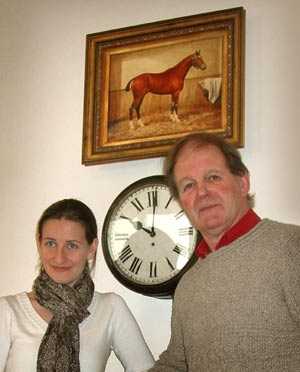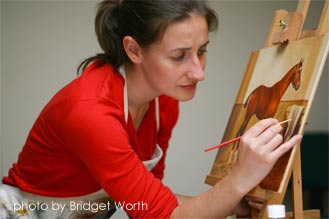
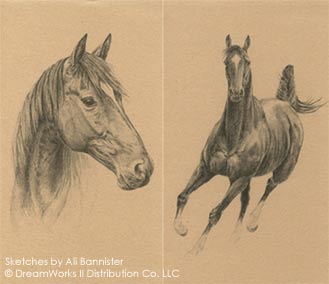
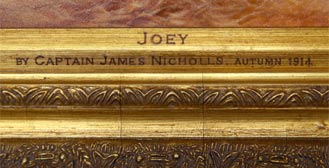
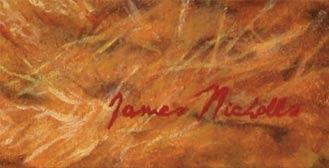
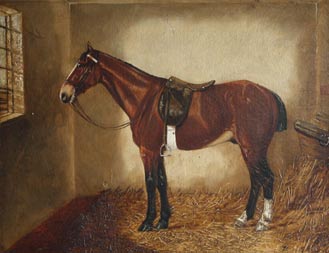
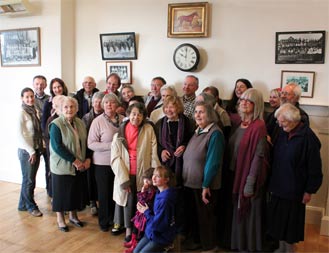
The Story Behind the Joey Painting
Since the success of War Horse, fans of the book and play have been making a pilgrimage to the author's home of Iddesleigh in Devon, England where the book is set, to see the painting he describes as hanging in the village hall. Mrs Weeks, who lives next door, was inundated with questions about the painting which sadly never existed.
Morpurgo said:
'They came to the lady who lives next door to the village hall, she's a dear friend, and she came to be in the position where she had to say, "It's not there I'm afraid" or "We've taken it down for cleaning" or endlessly having to make excuses for the fact there was no picture up in the hall.'
But the author found a way to solve the problem
'When the movie was being made, Spielberg commissioned an artist called Ali Bannister to do some sketches of the horse [to go into the film].'
'We went on set and met her and it was my wife's idea, that because of this thing that kept happening in the village, she thought it would be nice if there was a horse and painted just like it should be.'
Ali said, "When I approached Michael on set it was only to ask about the painting that he described in the book. As a fan of the book I had always wondered if it was real or not. The description of the painting had been the starting point for my research as head of the Equine Hair and Make-up department on the film but I couldn't find a picture of it anywhere."
"In the end I didn't have a chance to ask him about it. When I mentioned that I was doing the sketches of Joey to go into the film, Michael's wife, Clare jumped in, saying:
'We need an artist!'
Ali couldn't have been more surprised, excited or flattered. "It has been a huge honour for me to produce the painting I had longed for so many years to see. I hope people will enjoy it for many years to come."
In Ali, Michael saw an opportunity to "turn a big black lie into a small white one". The frame even bears the inscription from the book, 'Joey by Captain Nicholls, Autumn 1914'.
The idea was to create a painting that had an old feel to it
"It was important to me that the painting matched the one that Michael had in his head. Before I started painting I created digital mock-ups and we would discuss things like whether Joey's tail should be docked and Michael would make suggestions like removing the tack and adding a manger and some blankets into the corner.
When asked if she minded having to sign a painting with someone else's name, Ali replied, "Not at all. I want people to see the painting in the hall, feel connected to the story and believe that it could have been painted by Captain Nicholls. I want them to think that's what Joey looked like."
The Artist's Inspiration
The painting is particularly special to Ali as her great-great uncle served with the Artists Rifles in the First World War. She was also inspired by a painting that she grew up with. "My grandparents had a portrait of a horse called Old Jack, painted by my great-great grandfather in 1879. Old Jack was his horse and he clearly loved him very much. He was not the best bred or most beautiful horse in the world so my great-great grandfather must have appreciated him for his character, and I find that rather endearing. Even as a small child it held a certain magic for me and I used to run to the painting each time I visited."
War Horse, written in 1981, tells of Joey's amazing journey from a Devon farm to the battlefields in France. Inspiration for the story came from talking with people in the local pub, the Duke of York, about their experiences of the First World War. They included Albert Weeks, Wilfred Ellis and Captain Arthur Budgett. As a result the book, War Horse, is dedicated to them.Poignantly, Mrs Weeks, who had to send so many fans away disappointed, is the daughter-in-law of Albert Weeks. Both she and Dorothy Ellis, 90, widow of Wilfred Ellis, attended the unveiling of the painting on 6th December 2011.
Unveiling of the Painting
Afterwards Mrs Weeks said that she was delighted the painting had gone up in the village hall. "I'm very pleased about it. My father-in-law, Albert, didn't speak to me about the war but I'm glad the painting has now gone up in the village. I expect he'd have been happy about that."
She is now braced for more visitors, but said she was happy to continue opening the hall to them. "I don't mind at all, it's very nice to meet these people."
"The new painting is make-believe, but I don't think people will care. To have it there now is wonderful."
